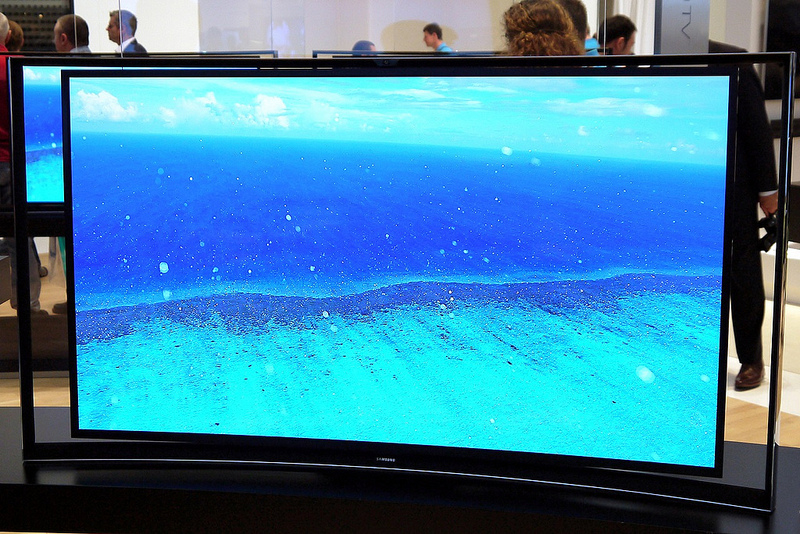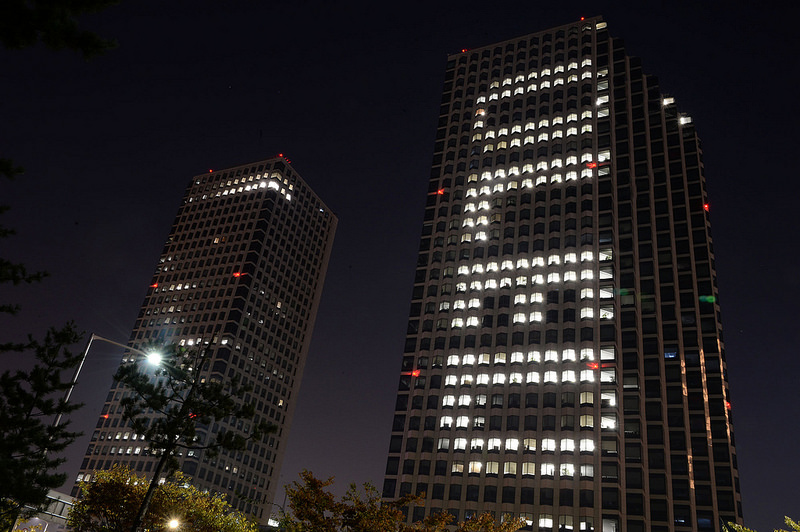OLED TV problems: Is the pain worth the gain?
Posted on May 29, 2017 by KVMG-CMS | 3 comments

OLED stands for organic light-emitting diode. The organic part isn't a health food trend; it refers to the carbon film that sits in front of the glass sandwiched between the screen and panel. Compared to LCD (liquid crystal display), OLED has quicker response times and higher image quality. But these perks come at a cost beyond the eye-opening sticker price. Are OLED TV problems worth the potential headache? It's your call, but we have a few points that will help you make a decision.
But before we dive into the problem areas, it's important to have some background on how OLED works. So we'll start by comparing it to LCD.
OLED vs LCD? What's the difference?
In an LCD, the panels are backlit; however, being that pixels aren't perfectly in sync with the backlight, LCD TVs are prone to an issue called blooming. This is when the light from a brighter part of the picture tickles over into the darkness.
OLED panels light themselves when an electric current passes through, so synchronization isn't a problem. Also, when the image calls for black, the pixels turn off, creating a deeper sense of darkness without the light from other areas leaking in. LG and Panasonic call this "absolute" black which differs from "relative" black (how dark a pixel appears in comparison to the brightest pixels). As far as we know, it doesn't get any darker than when pixels shut off. And the resulting contrast generates a more vibrant image.
But OLED has other benefits like...
A speedy refresh rate: Some OLEDs can run at a rate of 0.001ms, which is nearly 1,000 times faster than your average LCD. And it shows. The highly responsive, smooth picture that glides across the screen is as good as it gets.
Smaller, more compact depth of screen size: OLED displays don't have to accommodate a backlight like an LCD. As mentioned earlier, the pixels generate their own light. And smaller light sources mean that the depth of screen size can stand to be smaller. Sleek and thin is always in, as it allows consumers added flexibility in the placement and storage of their TVs.
Still, burn-in can leave you scorched
Now, here's where we get into the meat of OLED TV problems. One of the most common issues consumers run into is image retention—a faint after-image that lingers on screen. Usually, the after-image fades quickly, but there's a more serious form of image retention known as burn-in.
During burn-in, an image sticks to the screen for a long period of time, and can even remain when new content starts playing. Granted, this isn't unique to OLEDs (remember plasma?). While it can be a pain, the remedy is simple and straightforward:
- Avoid content that holds bright, static images on the screen for a long period of time.
- If you do experience burn-in, turn your TV off for around 5-10 minutes.
- Be sure to give your TV a rest every couple of hours or so. Other than burn-in, this has been proven to prevent couch potato zone-out.
Overall, burn-in isn't a major issue. For it to do permanent damage, you would have to leave your TV on for 24 hours or more.

But if burn-in doesn't get you, high input lag might
If you're a gamer, this is a point that will have you pulling your hair out. For those who might not know, input lag is the amount of time it takes a display to render picture data. If the lag is low, the image moves smoothly. But if it's high, that's when things stop looking pretty (jumpy, skipped frames, etc).
When gamers tried out HDR (high dynamic range) games on LG's OLEDs, they were far from pleased. Actually, they were so "far from pleased" that they started a heavily backed petition to rectify the matter. Yes, input lag is that serious of an issue.
But that wasn't the end of the story. After LG's B6 (their entry-level OLED TV) was updated, there were still a few cracks, or should we say a tear. In HDR Game mode, a screen tearing effect appeared at the bottom quarter-inch of the screen. Apparently, the B6 was unable to handle 60 Hz motion. Images would studder and judder, and the only fix was to put the TV in PC mode. Some tried to adjust the judder processing on their TVs, but that caused an all too familiar issue: you guessed it, input lag.
Lag's no fun, but affordability might be a bigger concern
OLED TVs are more affordable than they used to be. However, they're still more expensive than many of the other options available. For an LG set, prices begin at about $1,800. Why the hefty price tag? OLED technology is new and it's tough to manufacture. Back in 2013, its yield rate came in at a mere 10%; now it's closer to 90%. And considering that the cost for one OLED used to be upwards of $3,000, it's encouraging to see how much the price has dropped. It still has a ways to go before it can match a 4K LCD TV (about $600), but the high performance will be well worth the wait.
So, are OLED TV problems worth the headache?
OLED TV problems span from burn-in to high input lag. Factor in the sticker shock, and that's enough to drive away many consumers. But that would also mean saying no to superior image quality and warp-speed response times. Eventually, the price will drop and the performance will get better. And that's something that every consumer can get behind.
Still have a bone to pick with OLED TV problems? We're always up for a good discussion. Keep the conversation going by following us on Twitter and liking us on Facebook. Cheers!






Hi my tv suddenly turned off by itself now I can't turn back. When i press red button tv turns for 3seconds and turns off again. What wron with tv. Thanks
I watch movies only from my cable box and blueray disc I don't have any Netflix. my question is would my 4k oled tv look good on my 1080i cable box or will it just look like another tv. will this lg oled b7a upconvert the signal to look more like 4k?
thanks.
OLED not worth the risk and price now days. I had burn in after less than 3 years. Replaced it with a QLED. Was very surprised how good the picture looks. Now days buy a TV that fits your lifestyle. LED's have no burn in issues. We watch TV. That's how we roll. I do not want to give my TV a rest every couple of hours.